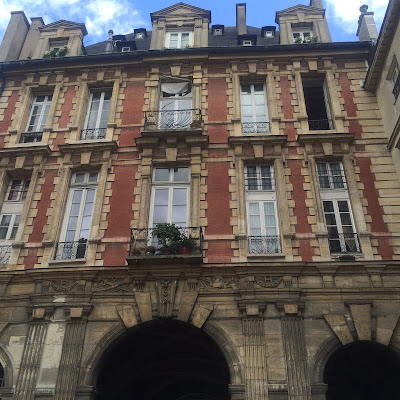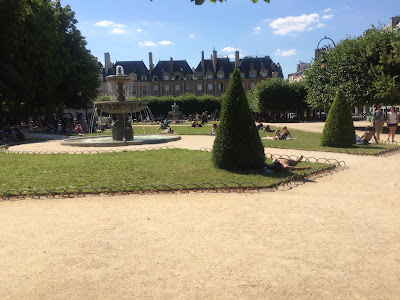The Vosges Square
 |
| Picture: Costa (2015) |
In 1606, the French king Henry IV wanted to attract the nobility to these new residences around the Vosges Square. They form continuous real estate around the place, but the mansard roofs give the impression of individual houses. Two more imposing pavilions mark the north and south entrances of the square. Its façades are filled with elements of classic inspiration and mark the privileged location of the king's pavilion.
 |
| Picture: Costa (2015) |
Thus was established the concept of the square as known to the Greeks and Romans in Classical Antiquity, the place of meetings and public activities, the heart of the city. Elegant and spacious, the Vosges Square could host public events. The regularity of its façades recalls the geometric order of the French Renaissance.
 |
| Picture: Costa (2015) |
The arcades, another feature of the European Renaissance, dominate the landscape of the square, providing a shelter for pedestrians in case of bad weather and allowing owners to diversify the use of the ground floor with commercial activities and services.
 |
| Picture: Costa (2015) |
The most famous address of the Vosges Square is the 6th, residence of the French writer Victor Hugo (1802-1885). The square is halfway between the Saint-Paul and Bastille subway stations (line 1). Just walk down Saint-Antoine Street and enter Birague Street. It is a great walk through the Marais, the Jewish, Medieval and Gay district of Paris.
No comments:
Post a Comment